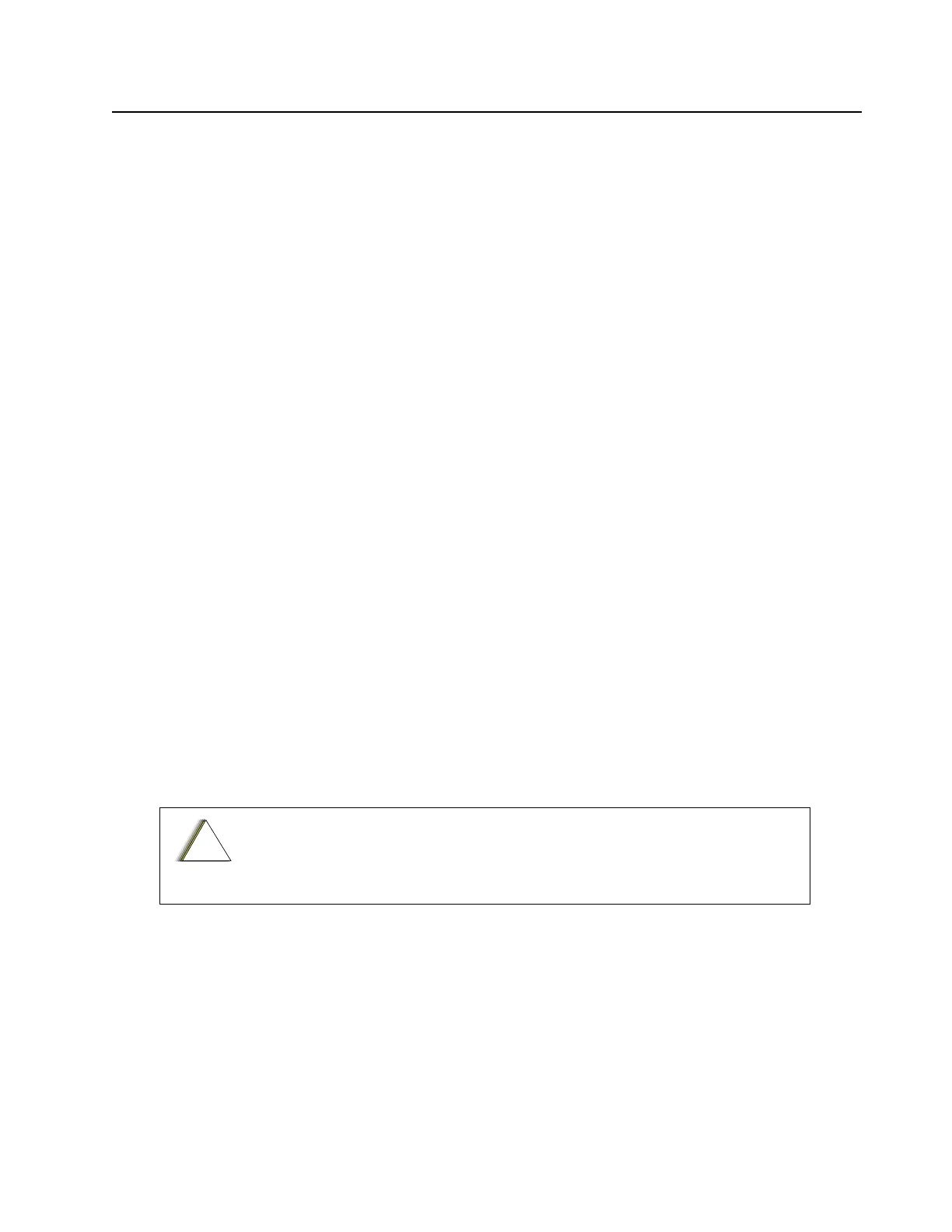Disassembly/Reassembly Procedures Ensuring Radio Immersibility 5-31
5.8.5 Pressure Pump Kit NTN4265
The pressure pump kit includes a pressure pump with gauge, and a pressure hose. As with the
vacuum pump kit above, the connector fitting - fitting seal pair connects the pressure hose to the
radio’s chassis.
5.8.6 Miscellaneous Hardware
Other items needed for testing the immersibility radio include:
• Large water container
• Deionized (DI) water
• A supply of replacement parts: Battery Contact Seal, Breathing Vent Label and Breathing
Vent Membrane.
5.8.7 Vacuum Test
The vacuum test uses a vacuum pump and gauge. The pump creates a vacuum condition inside the
radio, and the gauge monitors the radio for a stable vacuum reading; that is, checking for a properly
sealed, watertight unit. Before starting the vacuum test:
• Remove the battery.
• Remove the universal connector dustcover to expose the universal connector.
• Remove the breathing vent label and breathing vent membrane.
To conduct the vacuum test:
1. Attach antenna firmly to the radio.
2. Attach the vacuum hose to the vacuum pump. Check the pump and hose for leaks by
blocking off the open end of the hose and operating the pump a few times. The actual reading
of the gauge at this point is not important; it is important that the gauge pointer remained
steady, indicating no vacuum leaks in the pump.
3. Ensure that the fitting seal is attached to the hose-to-chassis pump connector. Screw the
pump connector into the tapped hole in the chassis.
4. Attach the open end of the hose to the pointed end of the pump connector.
5. Place the radio on a flat surface with the chassis facing upward.
6. Operate the pump until the gauge indicates 10 in. Hg of vacuum on the radio.Observe the
gauge for approximately 2 minutes.
• If the needle falls 0.5 in. Hg or less (one scale interval, for example, from 10 in. Hg to 9.5 in.
Hg), then the radio has passed the vacuum test and is approved for immersibility. No
additional testing will be required.
• If the needle falls more than 0.5 in. Hg (one scale interval, for example, from 10 in. Hg to less
than 9.5 in. Hg), then the radio has failed the vacuum test and the radio might leak if
Please do not bend or over tighten pump connector to the chassis.

